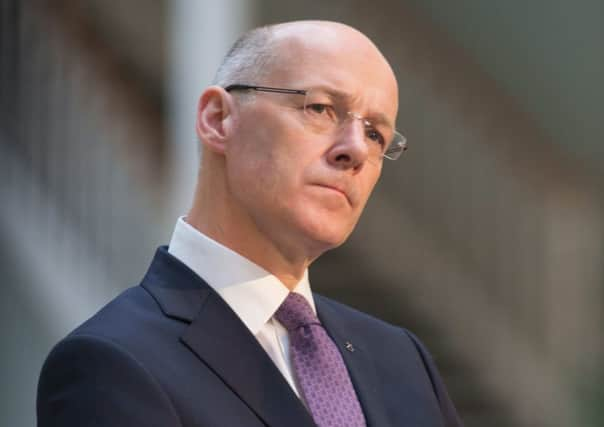John Swinney will cut property tax for middle-class


The finance secretary altered a controversial 10 per cent rate on properties worth more than £250,000 when he revised the bands and rates of his stamp duty replacement tax.
The changes to Mr Swinney’s Land and Buildings Transaction Tax (LBTT) were announced when his 2015-16 budget was debated at Holyrood.
Advertisement
Hide AdAdvertisement
Hide AdThey saw him introduce a new 5 per cent rate for properties in the £250,001 to £325,000 band, which will bring Scotland more into line with the stamp duty cuts announced by Chancellor George Osborne last year.
Under the new arrangement, buyers purchasing a house worth £300,000 will now pay £4,600 in tax compared with the £7,300 they would have been originally charged.
But when compared with the tax system south of the Border, the new proposals will see those buying a property over £330,000 pay more in Scotland.
For example, buying a house worth £500,000 would result in a £23,350 tax bill in Scotland, compared with £15,000 south of the Border.
When LBTT was originally announced in October’s draft Scottish budget, the levy was criticised for hitting aspirational house-buyers looking to purchase mid and high-market homes.
Mr Swinney was forced to move after the LBTT was undercut by Mr Osborne’s stamp duty reforms unveiled in the Autumn Statement in December.
The new LBTT arrangements will see Scottish house-buyers pay no tax on properties up to £145,000 – a move that increases the no-tax threshold by £10,000 from the original LBTT proposal of £135,000.
For properties worth between £145,001 and £250,000, buyers will pay 2 per cent on the proportion of the price above the £145,001 threshold.
FOLLOW US
Advertisement
Hide AdAdvertisement
Hide AdMost notably, Mr Swinney has created a new band for properties between £250,001 and £325,000. In that band, the new LBTT rate will be 5 per cent, as opposed to the 10 per cent that property buyers would have had to pay if the original arrangements had remained in place.
Mr Swinney’s original plan, unveiled in October, had been to tax properties worth between £250,001 and £1 million at 10 per cent. His revised plan will now see the 10 per cent rate kick in when properties are in the £325,001 to £750,000 band.
Properties worth £750,001 and over will be taxed at 12 per cent – ensuring that those aspiring to the upper end of the property market will still be forced to pay more.
Previously, Mr Swinney had envisaged that the 12 per cent rate would not come into force until properties were worth more than £1 million.
Mr Swinney said 99.9 per cent of residential transactions would pay less LBTT or no LBTT at all, when compared with the bands and rates originally proposed in October. Only those buying a home for more than £945,000 will pay more in tax under the new plans.
He said: “Tax rates should be designed to support the Scottish market. The average house price in Scotland is £170,000. The average detached house is around £244,000. In contrast, the average house price in London is £510,000. With 50 per cent of transactions lifted out of tax altogether, the measures I am proposing today send a very clear message.”
But at Holyrood, Labour’s finance spokeswoman Jackie Baillie described the move as the “fastest U-turn in history”.
The Conservative finance spokesman Gavin Brown was concerned that the system was still too punitive.
Mr Brown said: “The threshold of £325,000 still represents quite a jump to go to 10 per cent, and in certain areas of Scotland that will still be a punishing measure.”
